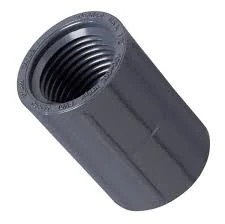-
Cangzhou Yulong Steel Co., Ltd.
-
Phone:
+86 13303177267 -
Email:
admin@ylsteelfittings.com
- English
- Arabic
- Italian
- Spanish
- Portuguese
- German
- kazakh
- Persian
- Greek
- French
- Russian
- Polish
- Thai
- Indonesian
- Vietnamese
- Zulu
- Korean
- Uzbek
- Hindi
- Serbian
- Malay
- Ukrainian
- Gujarati
- Haitian Creole
- hausa
- hawaiian
- Hebrew
- Miao
- Hungarian
- Icelandic
- igbo
- irish
- Japanese
- Javanese
- Kannada
- Khmer
- Rwandese
- Afrikaans
- Albanian
- Amharic
- Armenian
- Azerbaijani
- Basque
- Belarusian
- Bengali
- Bosnian
- Bulgarian
- Catalan
- Cebuano
- China
- China (Taiwan)
- Corsican
- Croatian
- Czech
- Danish
- Esperanto
- Estonian
- Finnish
- Frisian
- Galician
- Georgian
- Kurdish
- Kyrgyz
- Lao
- Latin
- Latvian
- Lithuanian
- Luxembourgish
- Macedonian
- Malgashi
- Malayalam
- Maltese
- Maori
- Marathi
- Mongolian
- Myanmar
- Nepali
- Norwegian
- Norwegian
- Occitan
- Pashto
- Dutch
- Punjabi
- Romanian
- Samoan
- Scottish Gaelic
- Sesotho
- Shona
- Sindhi
- Sinhala
- Slovak
- Slovenian
- Somali
- Sundanese
- Swahili
- Swedish
- Tagalog
- Tajik
- Tamil
- Tatar
- Telugu
- Turkish
- Turkmen
- Urdu
- Uighur
- Welsh
- Bantu
- Yiddish
- Yoruba

Nov . 12, 2024 07:58 Back to list
flange bs4504
Understanding Flanges A Dive into BS 4504 Standards
Flanges play a critical role in various engineering and construction applications, serving as connectors between segments of piping systems, valves, and equipment. The British Standard BS 4504 is a prominent standard that outlines the specifications for flanges, ensuring quality and compatibility across various industries.
What is BS 4504?
BS 4504 is a British Standard that specifies requirements for flanges used in pipe systems, particularly for use in pressure applications. Initially published by the British Standards Institution (BSI), it provides a comprehensive overview of flange dimensions, tolerances, material specifications, testing methods, and pressure-temperature ratings. This standard is critical to industries such as oil and gas, water treatment, and chemical processing, where robust and reliable piping systems are essential.
Flange Types Defined by BS 4504
The BS 4504 standard covers several types of flanges, each serving distinct purposes. The most common types include
1. Flat Flanges These flanges have a flat face and are versatile for various applications. They are typically used in low-pressure systems where the sealing requirement is not excessive.
2. Raised Face Flanges With a raised area around the bolt holes, these flanges provide a better sealing surface, making them suitable for medium to high-pressure applications.
3. Blind Flanges These are solid flanges that close the end of a piping system. They are ideal for maintenance and inspection purposes as they can seal off a section of the piping.
4. Slip-On Flanges Designed to slip over the pipe end, these flanges are welded in place. They are easier to install, making them a popular choice for many applications.
5. Weld Neck Flanges These flanges have a long tapered hub and are welded directly to the pipe. They are ideal for high-pressure applications due to their excellent structural integrity and ability to handle stress.
flange bs4504

Material Specifications
The BS 4504 standard specifies various materials for flange manufacturing, including carbon steel, stainless steel, and alloy steel. The selection of material depends on the application requirements, such as pressure ratings, temperature tolerance, and chemical compatibility. For instance, stainless steel flanges are preferred in corrosive environments, while carbon steel flanges are commonly used in lower-pressure applications.
Dimensions and Tolerances
One of the key aspects of BS 4504 is its focus on precise dimensions and tolerances. The standard specifies nominal sizes, which correspond to the diameter of the pipe, and outlines the thickness of the flange, bolt hole size, and bolt circle diameter. Adherence to these specifications ensures that flanges can be easily matched with other components, facilitating a reliable and leak-proof connection.
Testing and Quality Assurance
To ensure the integrity and safety of flange systems, BS 4504 mandates rigorous testing procedures. This includes pressure testing, non-destructive testing (NDT), and visual inspections. These tests are essential for verifying that flanges can withstand the operating conditions they are designed for. Organizations adhering to BS 4504 must maintain quality assurance protocols to ensure compliance with the standard and to minimize the risk of system failures.
Importance in Industry
The significance of BS 4504 cannot be overstated. By providing a clear and comprehensive framework for flange specifications, it promotes safety, increases interoperability between components, and enhances system reliability across various industries. The adherence to these standards minimizes the risk of leaks and failures, which can lead to costly downtime and safety hazards.
Conclusion
In conclusion, BS 4504 serves as a vital standard within the realm of flanges, laying down the essential guidelines for dimensions, materials, and testing. By following these standards, manufacturers, engineers, and industry professionals can ensure the reliability and efficiency of piping systems across a wide array of applications. Understanding and implementing BS 4504 not only facilitates better engineering practices but also contributes to the overall safety and functionality of industrial operations. Whether in offshore oil rigs, chemical plants, or municipal water systems, the role of quality standards like BS 4504 remains indispensable.
Latest news
-
ANSI 150P SS304 SO FLANGE
NewsFeb.14,2025
-
ASTM A333GR6 STEEL PIPE
NewsJan.20,2025
-
ANSI B16.5 WELDING NECK FLANGE
NewsJan.15,2026
-
ANSI B16.5 SLIP-ON FLANGE
NewsApr.19,2024
-
SABS 1123 FLANGE
NewsJan.15,2025
-
DIN86044 PLATE FLANGE
NewsApr.19,2024
-
DIN2527 BLIND FLANGE
NewsApr.12,2024
-
JIS B2311 Butt-Welding Fittings LR/SR 45°/90° /180°Seamless/Weld
NewsApr.23,2024











